Tsukiji Outer Market; surviving and thriving / Professional or Not, Connoisseurs Love Tokyo’s Tsukiji Outer Market; Area Next to Former Site of Famed Market Still Shines
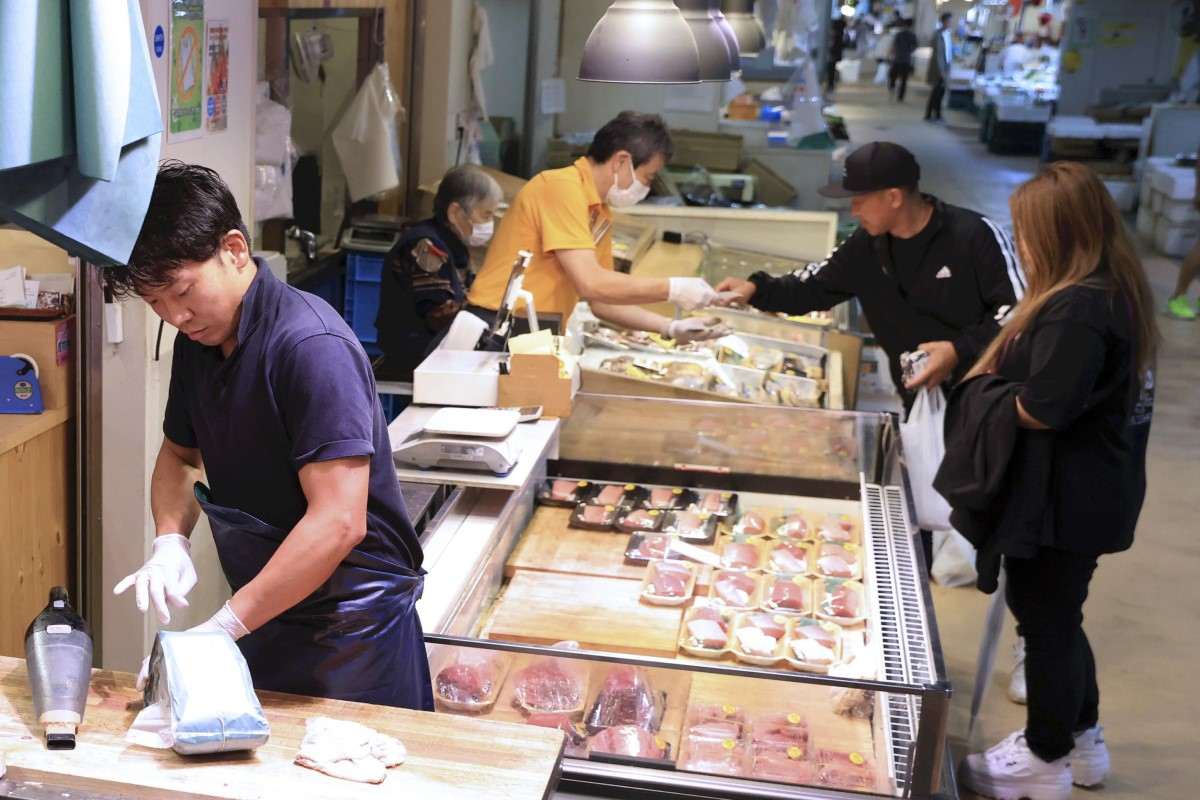
Fish stores are seen at Tsukiji Uogashi in Chuo Ward, Tokyo, on the morning of May 28.
The Yomiuri Shimbun
1:00 JST, June 26, 2024
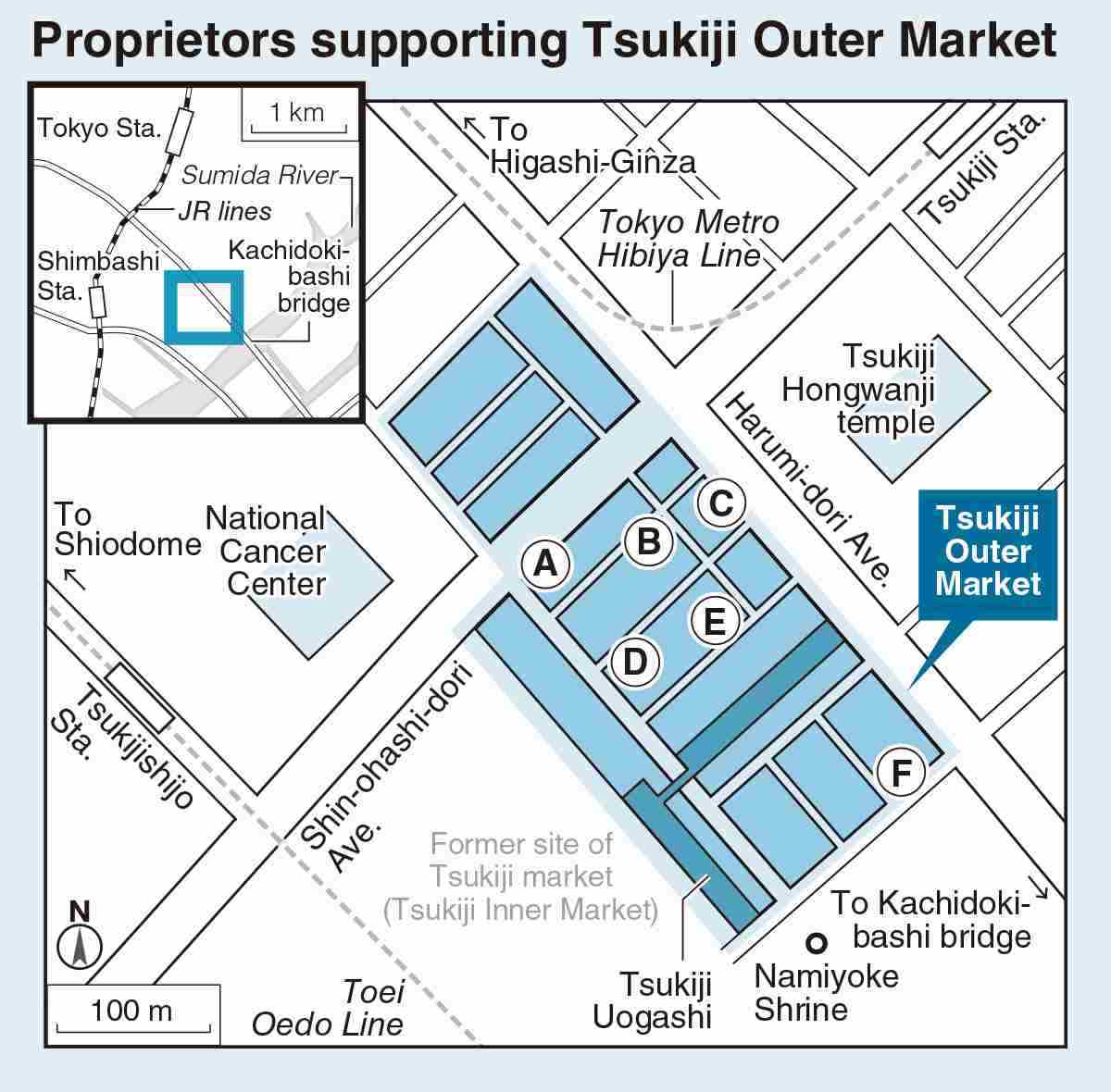
The Tsukiji Outer Market in central Tokyo is the bustling home to about 400 specialty shops selling everything from fresh seafood to cooking utensils. It went through tough times following the relocation of the main Tsukiji Market and then restrictions from the pandemic, but is thriving again as the original market area undergoes a massive redevelopment nearby. This is the first installment in a series on its attractions and charms.
The first floor of Tsukiji Uogashi, a three-story commercial facility located in a corner of Tsukiji Outer Market, is lined with about 60 intermediate wholesalers handling seafood, fruits and vegetables. As soon as it opens at 5 a.m., restaurant operators from all over the nation scan the foodstuffs just auctioned off at Toyosu Market, which took over the functions of the former Tsukiji Market in a new location.
“If you can wait another 30 minutes, fresh products will be delivered from Toyosu,”
“The flounder is very firm today.”
Such words can be heard from sellers dexterously cleaning fish or making recommendations to familiar customers.
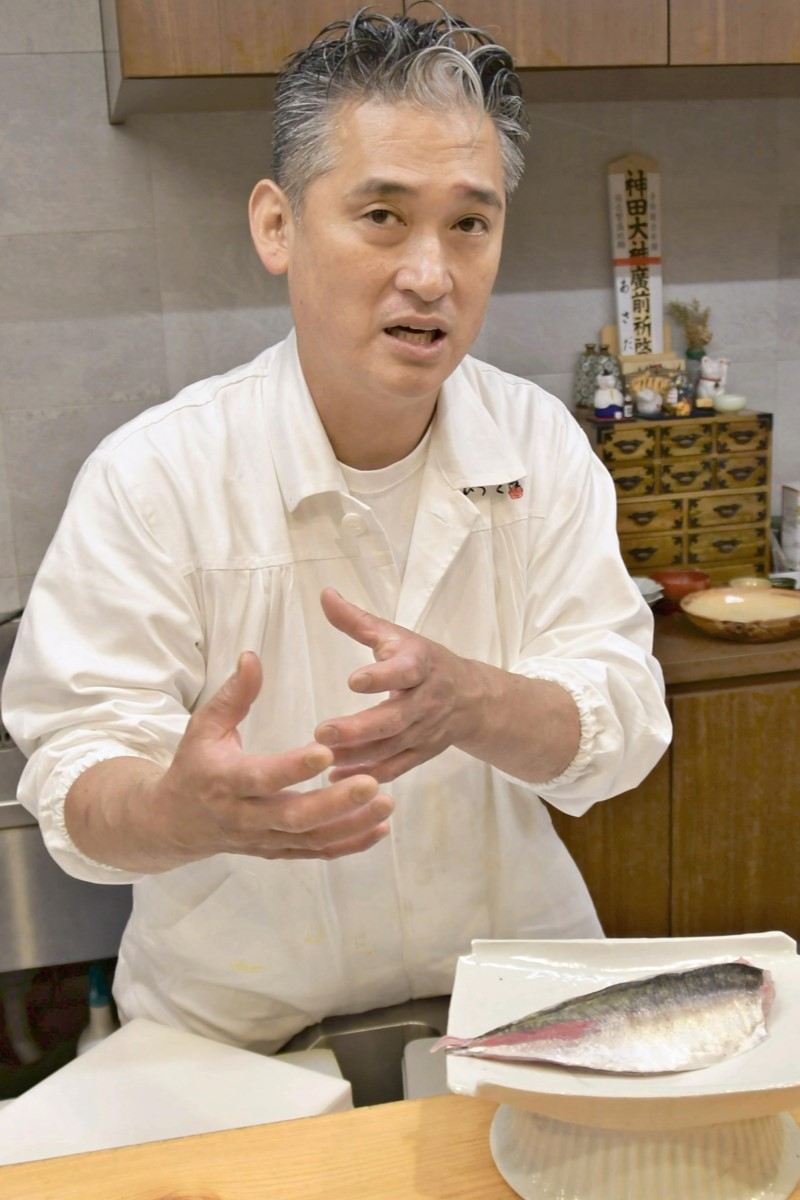
Takaaki Asada talks about the Tsukiji district in Shinjuku Ward, Tokyo, on May 29.
Takaaki Asada, who runs Asada, a Japanese restaurant in the Kagurazaka district of Shinjuku Ward, Tokyo, is a frequent shopper at Tsukiji Uogashi.
“The oysters are so fresh that it would be a waste to squeeze lemon on them,” a vendor said to Asada, 50, as he closely examined seasonal ingredients while thinking about how to use them in the day’s menu.
Asada began frequenting the Tsukiji area when he was around 19 while working at a high-end restaurant in Tokyo’s Aoyama district. The senior chefs did not teach him anything because it was a time when cooking skills were believed to be “something to steal from others.” So, Asada begged a intermediate wholesaler in Tsukiji he knew to teach him the basics of processing the fish.
He went to Tsukiji early in the morning twice a week to learn from scratch about everything from scaling to filleting fish.
After six months, Asada was finally recognized by his seniors at the restaurant and put in charge of basic preparations of ingredients.
Thirty years have passed since then, and it is now an age in which fresh foods can be ordered online. However, Asada has not changed his habit of going to Tsukiji.
“Because the care taken by the dealers can be felt in the ingredients, my feelings, too, are in the dishes that I serve,” Asada said with a smile.
Pandemic brings change
Tsukiji Outer Market is located outside the original Tsukiji Market, which opened in 1935 in Tokyo’s Chuo Ward. It developed by offering products that were not available at Tsukiji Market, which came to be known as Tsukiji Inner Market. Now the outer market has 400 restaurants, fish dealers and dry food stores, among other shops, covering an area 400 meters long and 120 meters wide.
In October 2018, when Tsukiji Market was relocated to the Toyosu district in Koto Ward, Tokyo, four kilometers away, many long-established stores in Tsukiji Outer Market stayed put. Tsukiji Uogashi was built by the Chuo Ward government in the same month to maintain the vitality of the Tsukiji district even after the relocation. Some Tsukiji Inner Market intermediate wholesalers and others opened new stores at Tsukiji Uogashi. Restaurant operators and other professionals take priority in the early morning at Tsukiji Uogashi. Visits by general customers and tourists gradually increase after 9 a.m. Established in 1927, Hiei is an intermediate wholesaler specializing in tuna. It originally had a store in the Tsukiji Inner Market, dealing with vendors.
Hiei’s store in Tsukiji Market relocated to Toyosu Market, but the operator also opened a shop in Tsukiji Uogashi over concerns that the owners of Japanese restaurants in Tokyo’s Ginza and Shimbashi districts and others would find Toyosu too far to walk or bike to.
Hiei President Eiji Kusumoto, 69, said serving customers from the general public at Tsukiji Uogashi caused him much confusion at first.
Hiei’s signature product is raw tuna, which is rare and expensive. Although he does not have to explain how to preserve the fish to professionals, he is asked by general customers if it is OK to freeze it, for instance.
Kusumoto said he often was disconcerted by such questions since it was obvious to him that freezing fresh tuna can degrade the fish’s quality.
However, business from ordinary people saved him during the coronavirus pandemic that began not too long after the relocation and opening of the Tsukiji Uogashi store. Restaurant buyers, his usual clients, stopped coming to his store as they were forced to suspend operations to reduce the risk of spreading infections. Instead, local residents, who had begun to cook more as they spent much of their time at home, began visiting Hiei.
This type of customer realized that they could get higher quality food at more affordable prices at Hiei than at supermarkets or department stores, Kusumoto said. Many of them continue to shop at Hiei even in the wake of the pandemic.
“I realized that stores which can stand up to the discerning eye of business operators are also loved by the public,” Kusumoto said.
Food professionals
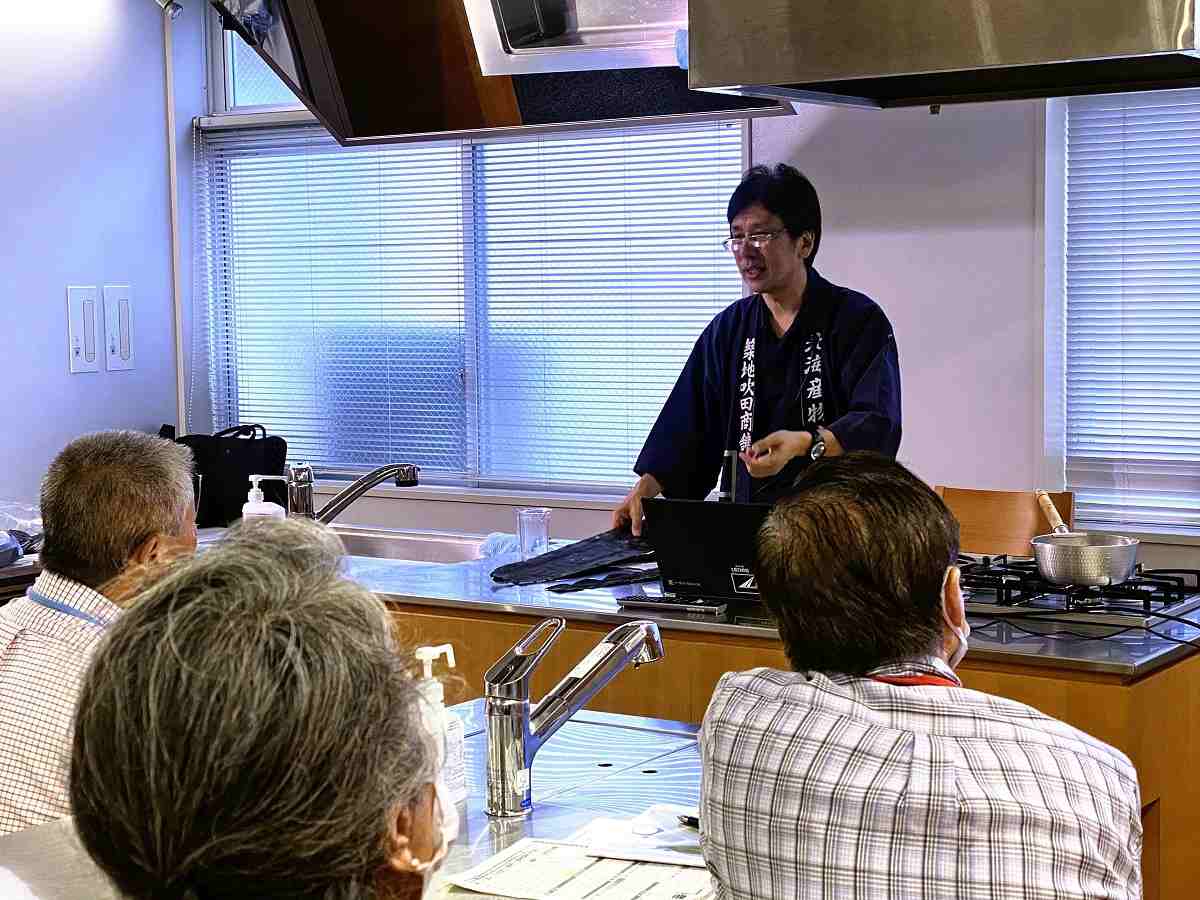
Katsuyoshi Suita explains the characteristics of kombu from various regions at Tsukiji Uogashi in Chuo Ward, Tokyo, on May 28.
Various seminars are held at the kitchen studio on the third floor of Tsukiji Uogashi, where shopkeepers at Tsukiji Outer Market and others lecture on the characteristics of foodstuffs and the art of cooking.
On May 28, Katsuyoshi Suita, 59, of Suita Shoten, a long-established kombu merchant, lectured on kelp. He demonstrated how to make kombu dashi broth and served participants five kinds of dashi made with Rishiri, Rausu, Hidaka and other kombu. He also explained what kinds of dishes the respective broths go well with.
Participants also tasted a miso soup made with kombu dashi broth and another made without it. They were surprised to find the miso soup made with dashi had a stronger flavor even though only half the amount of miso was used compared to the soup made without dashi.
They looked impressed by his explanation that it is possible to reduce the intake of salt contained in miso by cooking miso soup made with dashi, which is good for health and does not cloy the palate.
“Tsukiji Outer Market is still full of seasoned connoisseurs,” Suita said, adding, “I want people to visit the market especially when they have no idea about what kind of food products they should choose.”
Popular Articles
Popular articles in the past 24 hours
-

Israeli Tourists Refused Accommodation at Hotel in Japan’s Nagano...
-

China Attacks Japan at U.N. Security Council Meetings; Representa...
-

Enactment of Revised Medical Care Law: Will Legal Revision Lead t...
-

Tokyo Ranks 2nd in Global Power City Index, Highest-Ever Position...
-

Giant Pandas at Ueno Zoo Visited by Crowds on 1st Day of Opening ...
-

AR Godzilla Attraction Opens at Tokyo Dome City; Experience Immer...
-

Former Maebashi Mayor Ogawa Announces Candidacy for Mayoral Elect...
-

Japan to Raise Subsidy Cap for EVs by ¥400,000, Looking to Align ...
Popular articles in the past week
-

M4.9 Earthquake Hits Tokyo, Neighboring Prefectures
-

Tsukiji Market Urges Tourists to Avoid Visiting in Year-End
-

China to Impose Sanctions on Shigeru Iwasaki, Former Head of Japa...
-

Japan to Support Central Asian Logistics Route That Bypasses Russ...
-

Genome Study Reveals Milestone in History of Cat Domestication
-

Speed Skater Yukino Yoshida Clinches Ticket to Milan
-

South Korea's Top Court Dismisses Nippon Steel Appeal in Lawsuit ...
-

‘Bear' Takes Top Spot as Japan's Kanji of the Year, Reflecting Ye...
Popular articles in the past month
-
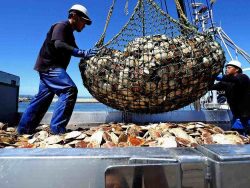
Japan’s Hopes for Seafood Exports Shot Down in China Spat
-

Keidanren Chairman Yoshinobu Tsutsui Visits Kashiwazaki-Kariwa Nu...
-

Japan to Charge Foreigners More for Residence Permits, Looking to...
-

Imports of Rare Earths from China Facing Delays, May Be Caused by...
-

Japan Exports Rise in October as Slump in U.S. Sales Eases
-

Niigata Gov. to OK Restart of N-Plant; Kashiwazaki-Kariwa May Be ...
-

Govt Aims to Expand NISA Program Lineup, Abolish Age Restriction
-

Blanket Eel Trade Restrictions Rejected
"Society" POPULAR ARTICLE
-

M4.9 Earthquake Hits Tokyo, Neighboring Prefectures
-

M7.5 Earthquake Hits Northern Japan; Tsunami Waves Observed in Hokkaido, Aomori and Iwate Prefectures
-

Tsukiji Market Urges Tourists to Avoid Visiting in Year-End
-

Beloved Cat Stationmaster Nitama in Wakayama Pref. Passes Away at 15
-
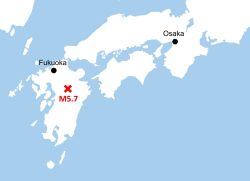
M5.7 Earthquake Hits Japan’s Kumamoto Pref., Measuring Upper 5 Intensity, No Tsunami Expected
JN ACCESS RANKING
-

Japan’s Hopes for Seafood Exports Shot Down in China Spat
-

Keidanren Chairman Yoshinobu Tsutsui Visits Kashiwazaki-Kariwa Nuclear Power Plant; Inspects New Emergency Safety System
-

Japan to Charge Foreigners More for Residence Permits, Looking to Align with Western Countries
-

Imports of Rare Earths from China Facing Delays, May Be Caused by Deterioration of Japan-China Relations
-

Japan Exports Rise in October as Slump in U.S. Sales Eases






